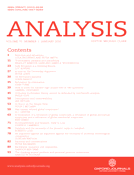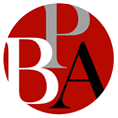-
Views
-
Cite
Cite
Gabriel Uzquiano, How to solve the hardest logic puzzle ever in two questions, Analysis, Volume 70, Issue 1, January 2010, Pages 39–44, https://doi.org/10.1093/analys/anp140
Close - Share Icon Share
Extract
Rabern and Rabern (2008) have noted the need to modify ‘the hardest logic puzzle ever’ as presented in Boolos 1996 in order to avoid trivialization. Their paper ends with a two-question solution to the original puzzle, which does not carry over to the amended puzzle. The purpose of this note is to offer a two-question solution to the latter puzzle, which is, after all, the one with a claim to being the hardest logic puzzle ever.
Recall, first, Boolos's statement of the puzzle:
And remember his guidelines: Since the stipulation that Random should set out to speak truly or lie, albeit randomly, trivializes the puzzle, Rabern and Rabern (2008) have proposed capturing the spirit of the puzzle by replacing the third stipulation above with the following: Rabern and Rabern (2008) provide a clever two-question solution to the original puzzle, which exploits the fact that there are both self-referential questions that no truth-teller can answer and self-referential questions that no liar can answer. So, if we assume that all of A, B and C set out to speak the truth or lie, albeit randomly in one case, then we can glean more information from their inability to answer certain self-referential yes-no questions. The question remains, however, whether we can give a two-question solution to the amended puzzle in which one of them answers ‘da’ or ‘ja’ randomly.2Three gods A, B and C are called, in some order, True, False and Random. True always speaks truly, False always speaks falsely, but whether Random speaks truly or falsely is a completely random matter. Your task is to determine the identities of A, B and C by asking three yes-no questions; each question must be put to exactly one god. The gods understand English, but will answer all questions in their own language, in which the words for ‘yes’ and ‘no’ are ‘da’ and ‘ja’, in some order. You don't know which word means which. (Boolos 1996: 62)




